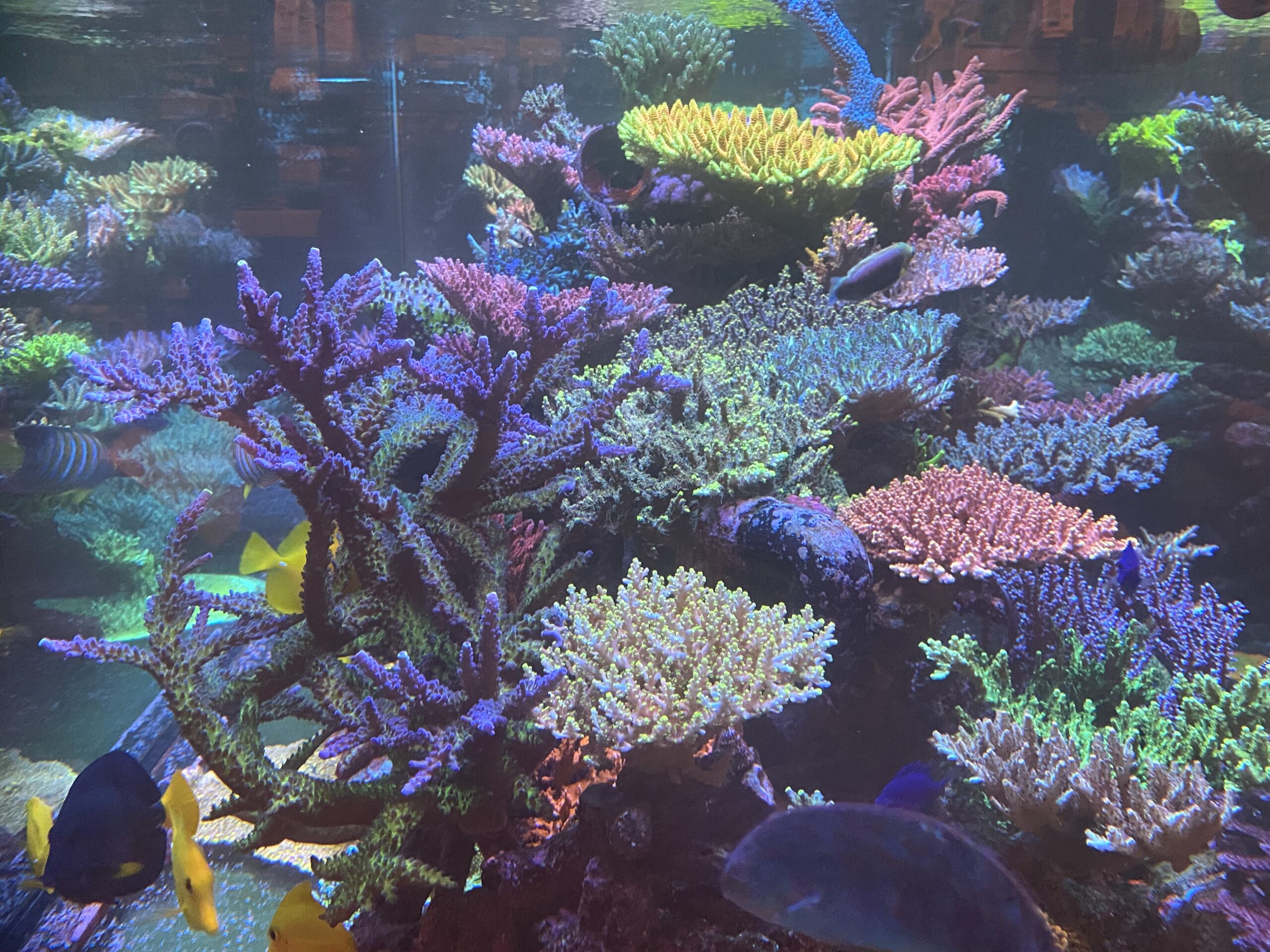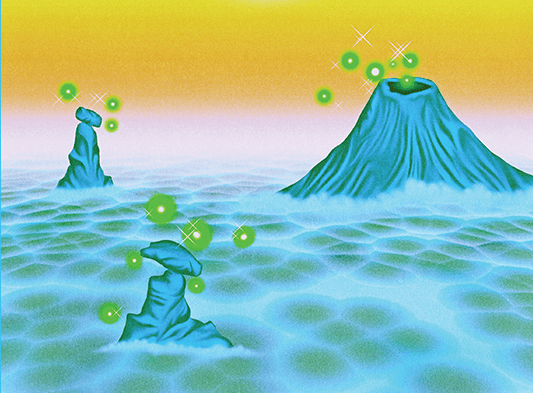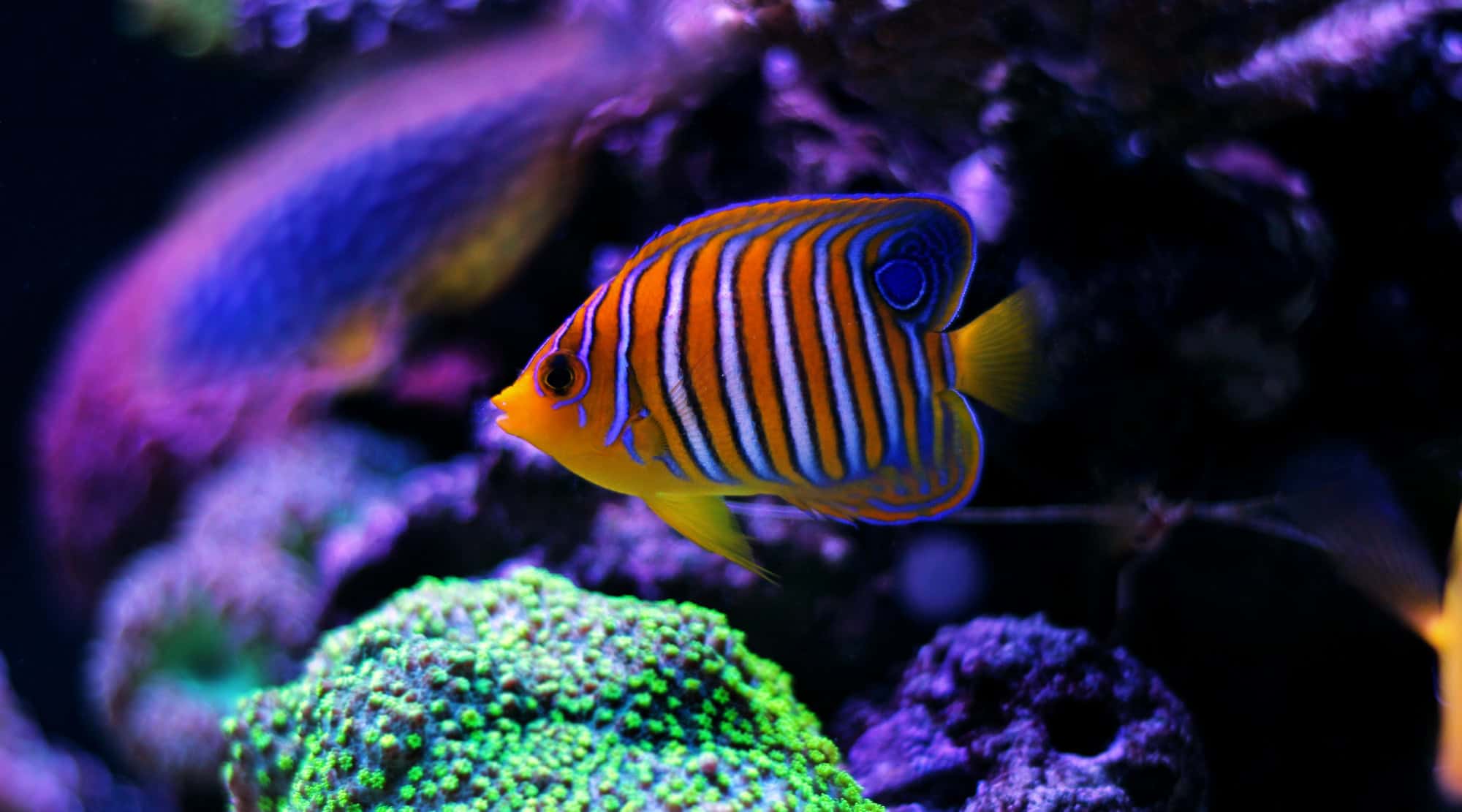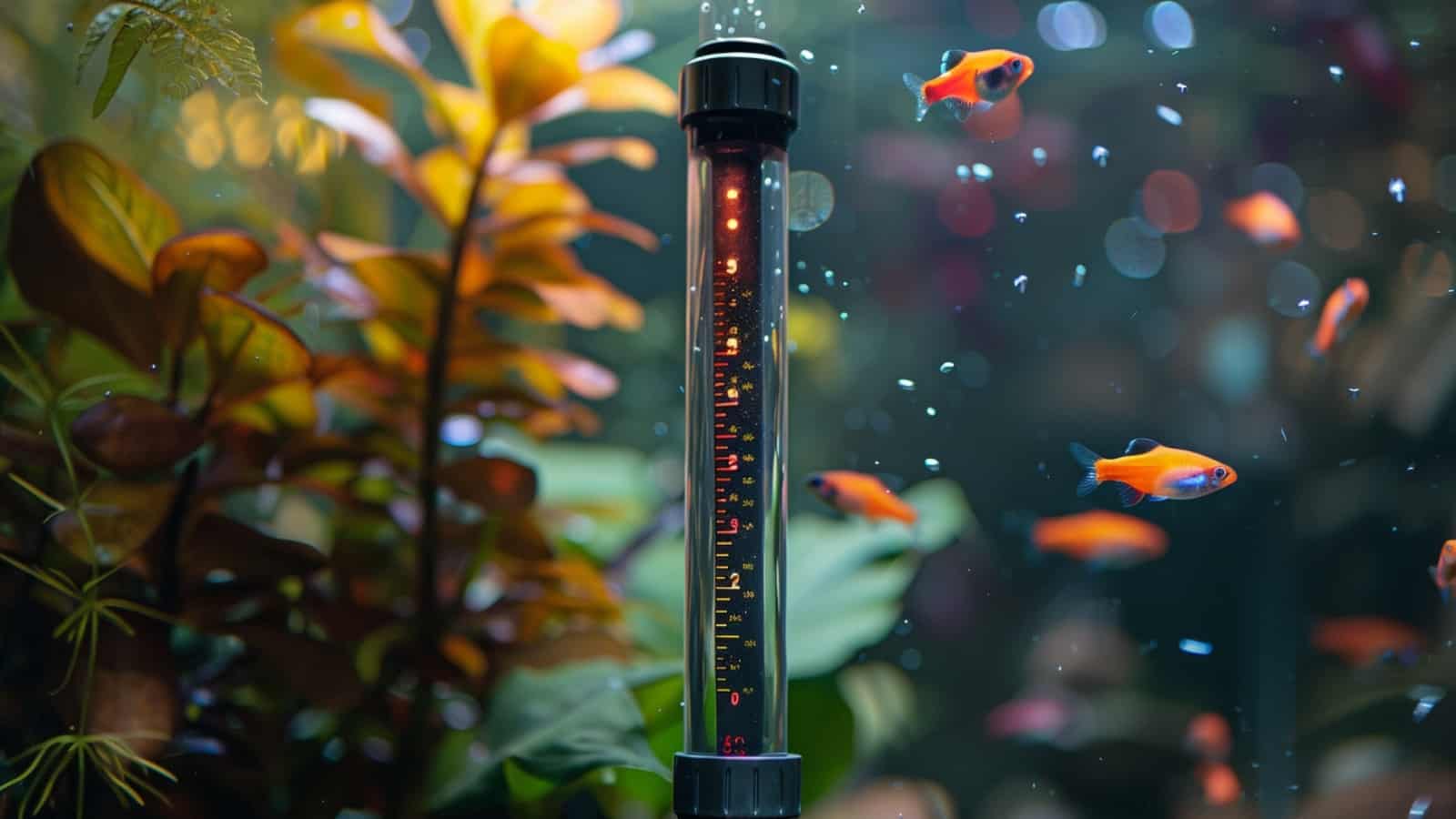As we have noted in previous articles most aspects of the hobby have some controversy associated with them. Needless to say, coral nutrition is one of them. For many years the general consensus was that all corals needed to thrive was fish excrement and light. However, after getting a better understanding of coral physiology and looking at the literature it has become clear that corals require more than this.
By simply looking at a coral’s physical structure it only makes sense that an animal that has the largest portion of its body as a mouth would require feeding. Couple that with many corals having nematocysts which may help in food capture and it becomes clear that these animals require food of some type. For much of my time keeping corals I was in the school that thought that feeding corals was unnecessary and that their nutritional needs could easily be met from what the fish left them and from what their zooxanthellae supplied them.
My philosophy changed after seeing the work that Dr. Jamie Craggs was doing on getting corals to spawn over seven years ago. In this early work, besides manipulating several factors including light and the lunar cycle, Jamie got corals into spawning condition only after making sure that their nutritional needs were met. After seeing the results of his work, I have been working for the past few years to meet the different nutritional needs of the corals in my care.
Before getting into coral nutrition per se, it is first necessary to understand that there are several ways in which corals meet their nutritional needs. First and foremost for the photosynthetic corals, there is their symbiotic relationship with the zooxanthellae algae. These algae are embedded in the coral’s tissue and use the coral’s waste products of carbon dioxide, nitrogen, and phosphorous and convert them into usable substances for the coral. These algae supply up to 85% of the coral’s needs in terms of carbohydrates, amino acids, vitamins, and fatty acids.
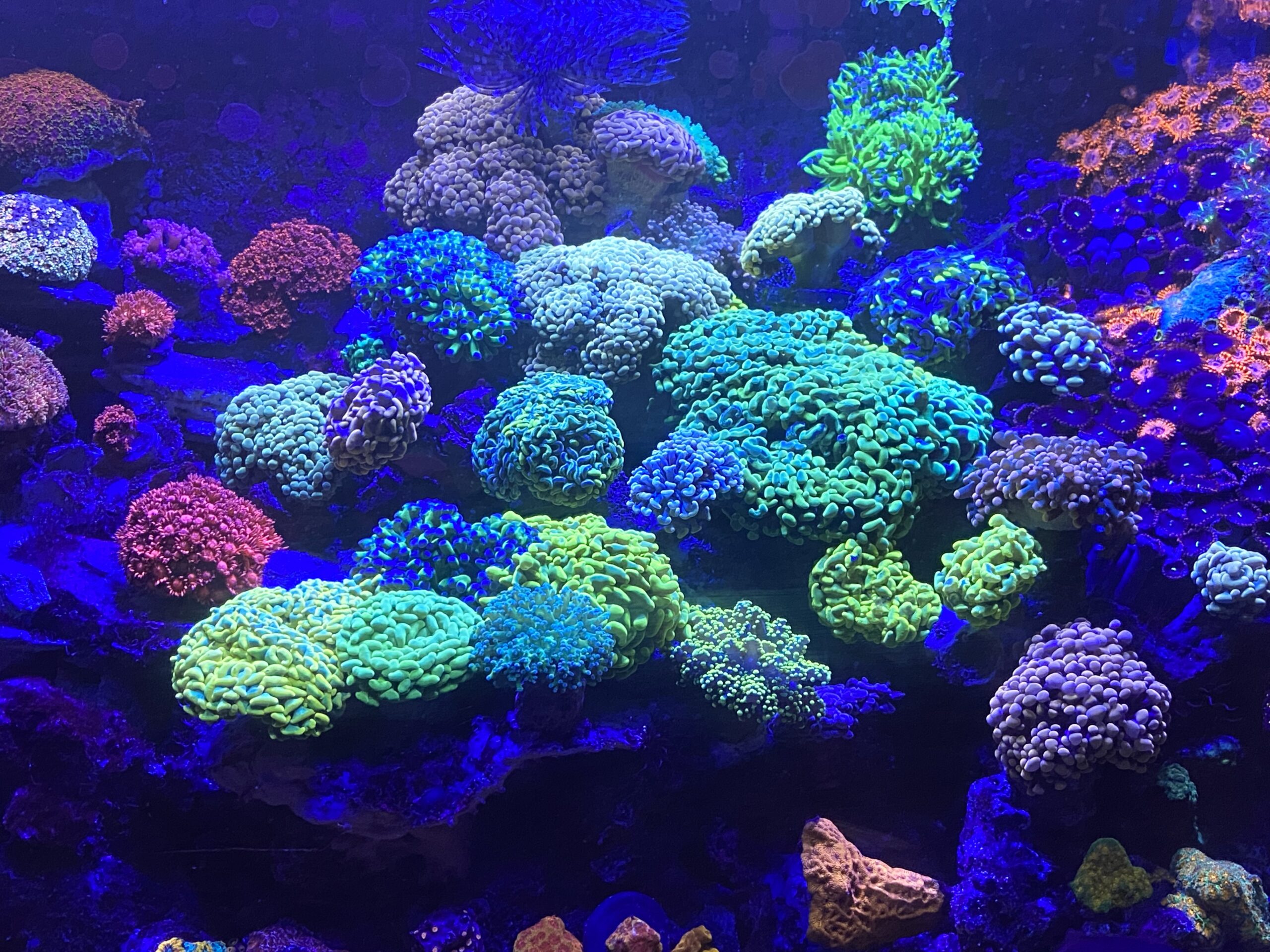
By supplying 85% of the coral’s needs allows most corals to survive, it does not provide enough energy or nutrition to allow the corals to reach a state where they can spawn or truly achieve their full potential. As a result, they need to supplement this energy source and have developed multiple ways to achieve this. In addition to providing for the coral’s nutrition zooxanthellae also affect the coral’s color. When in high densities, which occurs when other forms of coral nutrition are not being provided to the coral, they can mask the coral’s colors and make them look beige or brown. And since one of the main reasons we keep corals is their coloration, we should try to do everything we can to optimize their colors by providing proper coral nutrition.
Nitrate and Phosphate
Before delving deeper into coral nutrition, it is necessary to understand the role that nitrate and phosphate play. Both of these compounds are necessary for maintaining coral health so they need to be present. As mentioned previously the recommended goal is .03-.1 for phosphate and 3-15 for nitrate, with a 1:100 ratio between these compounds seemingly being best. In no instance is it recommended to keep them at 0. But when their levels get too high, this may cause excessive growth in the zooxanthellae, as they are both algae food. If their levels get too high, this may lead to the density of zooxanthellae getting high as well, which can lead to some masking in the coloration of the corals. A caveat to that is that if enough of these compounds are not present, they need to be made up by providing some other means to meet the coral’s nutritional needs.
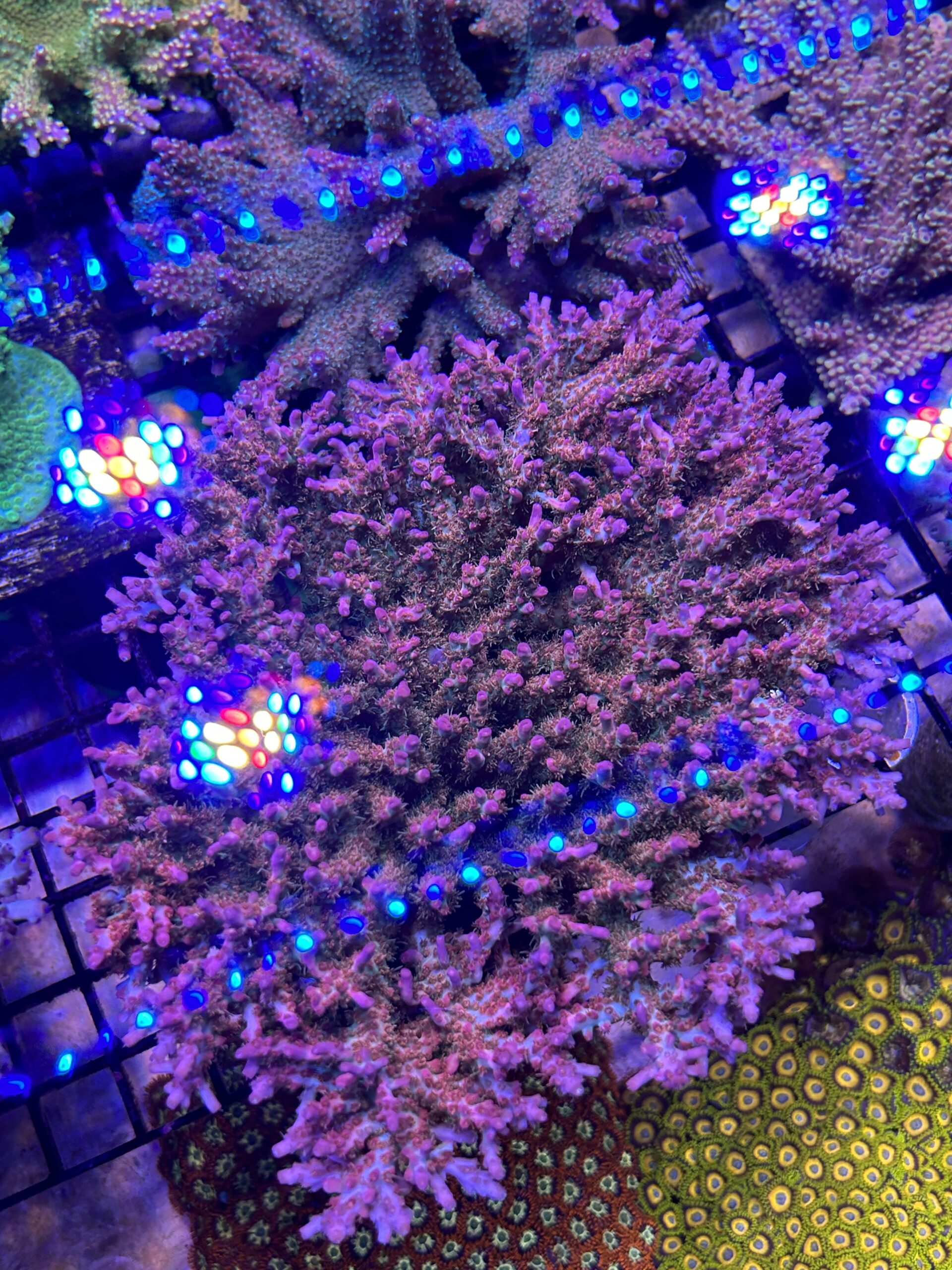
For these reasons, the best way to optimize coral coloration is to have some nitrate and phosphate present but supplement with other foods to meet all of the coral’s nutritional needs. An interesting finding that I just came across was that the more food that is present, the more corals will eat. This may seem intuitive, but this research was only published five years ago. This indicates how little we still know in terms of coral nutrition and how to optimize it.
Four building blocks of coral food
So, what is it that corals eat and how do we provide this? To start, corals need four basic building blocks from which they build their structures and which they require for growth. The first of these are carbohydrates, from which they synthesize the second critical compound, amino acids. From amino acids, they build all of their proteins including pigments, which are critical for pigmentation. Without adequate carbohydrates and hence amino acids, corals will not have the colorful pigments that are so desirable. The third building block is fatty acids, which are their main energy source and are critical for building cell structures. Last are vitamins, which are cofactors and precursors for most of the biological processes within the coral itself.
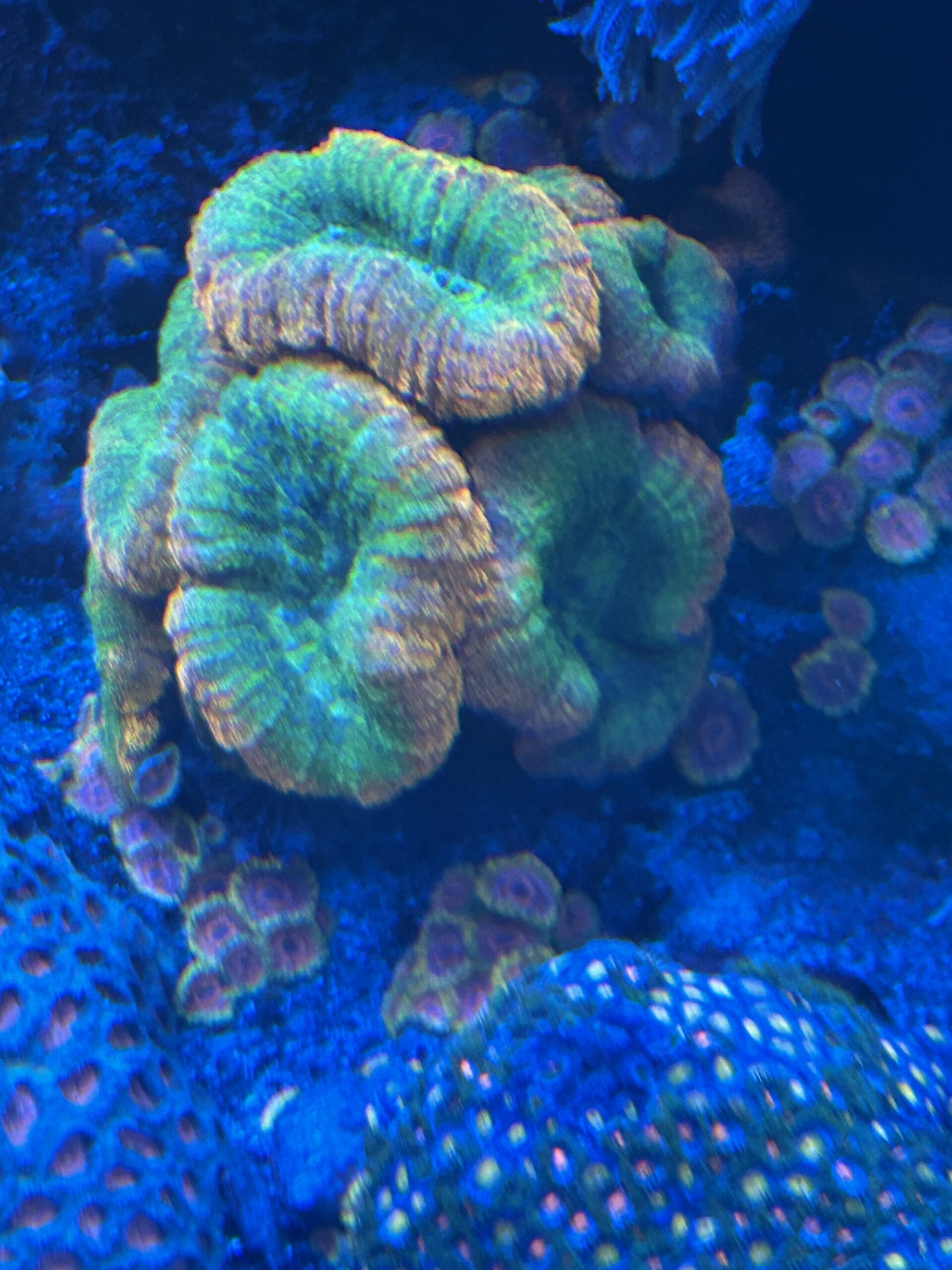
Knowing that corals require all of these compounds provides a basic understanding of what needs to be provided in order for them to thrive. Not all corals consume things the same way as soft corals get their nutrition one way while LPS corals another and SPS corals a third way. There are some generalities to getting nutrition but what they get and how they get it varies between coral types. Corals cannot move so they have no means for feeding outside of the area they are located. But they have evolved to maximize their feeding capability.
At night, which is when most corals feed, they expand their tissues, excrete more mucous, and send out polyps all of which are designed to capture any prey or dissolved organic matter (DOM) on which corals feed. In addition to the byproducts of photosynthesis from their zooxanthellae, corals feed on a variety of organisms including zooplankton, phytoplankton, bacterioplankton, detritus, small crustaceans, pseudo plankton, invertebrate larvae, small fish, fish eggs, and as mentioned above DOM.
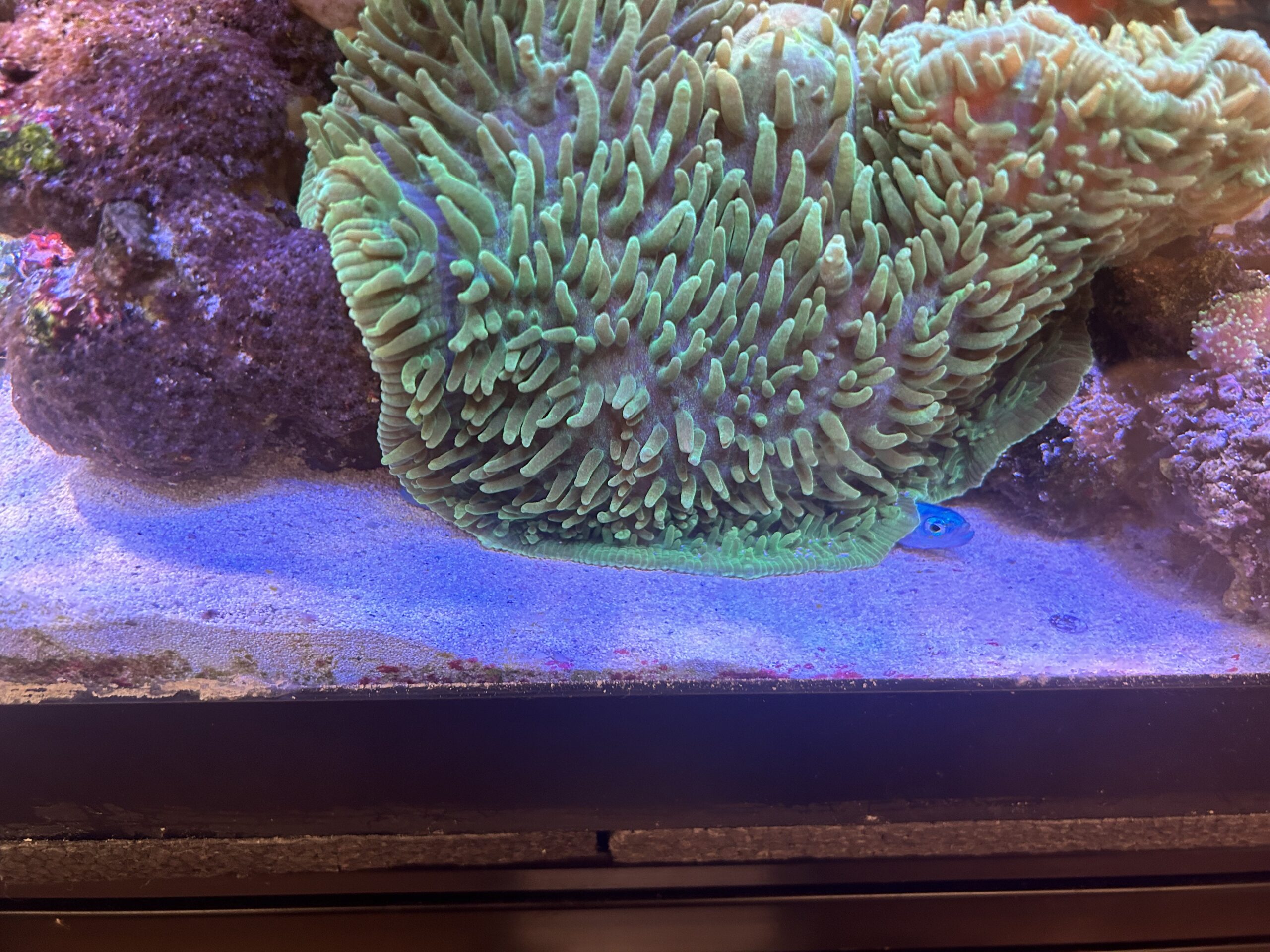
Of these foods bacteria, DOM and detritus are the most important food sources, with the most important being bacteria. It has been found that bacteria alone can provide the daily requirements of nitrogen and carbon. Bacteria also provide an important source of phosphorous for the zooxanthellae. Unfortunately, we do not know exactly which species of bacteria are the most vital to coral nutrition nor do we know if different corals consume different species of bacteria. Corals consume bacteria through their mucous and cilia to draw in both attached and free-swimming bacteria. When an adequate supply of beneficial bacteria is present the amount of nutrition that it can provide is unusually high in terms of how much energy is required for capture and ingestion.
Bacteria may also be important in being the means through which corals derive trace elements. From the literature I have reviewed, I have not been able to find any support for corals consuming most trace elements directly, but rather they receive their trace elements through the consumption of bacteria. For these reasons, bacteria cannot be underestimated in terms of what it can supply to coral nutrition, and this is why it is critical to have the right amount and varied species of bacteria in a coral tank. This may also help explain why tanks that are receiving a carbon source to “feed” the bacteria do well. In that not only does the carbon source, be it alcohol, vinegar, sugar, etc, provide energy for the bacteria that consume nitrate and phosphate, but it may also aid the bacteria that corals consume to proliferate more robustly and thus help feed the corals.
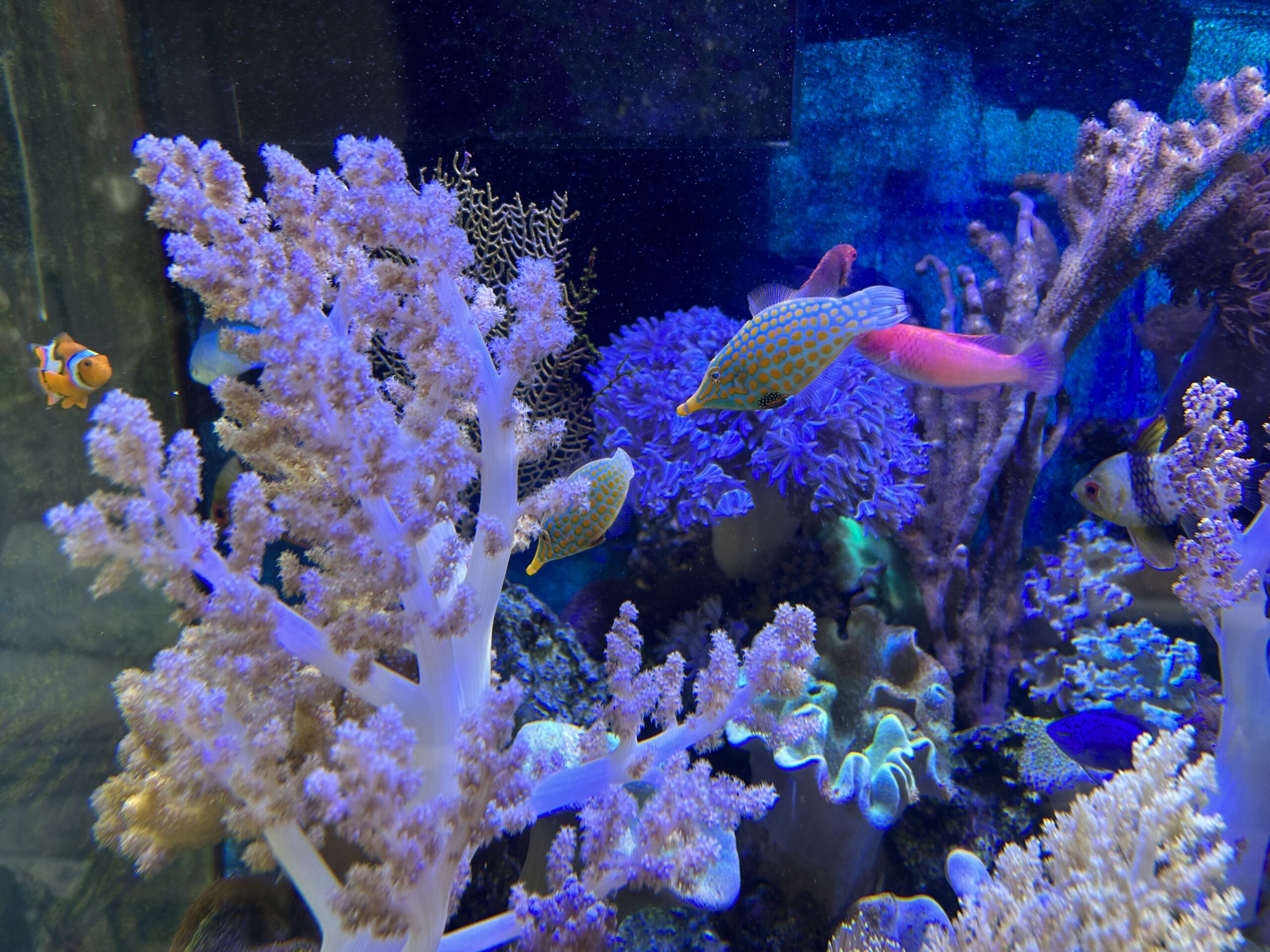
In addition to having an adequate supply of beneficial bacteria present in a tank for corals to consume, it has been my experience that providing small supplements of foods corals readily consume is also beneficial. Again, the goal is to provide for the coral’s nutritional needs without adding excessive nutrients and this requires balancing and testing. In my own tanks, all of the corals are fed three times per week, at night right before the lights go off. The foods being fed include ReefRoids, Benepets, Reef Chilli, Goniopower, ZoPlan, Phytoplan, Chalicepower freeze-dried or frozen rotifers and copepods, and fish eggs. These compounds are mixed into a slurry and added to the far side of the tank away from the overflow into the powerheads.
In addition, if a coral looks faded or weak or for some of the LPS corals this food is target fed onto them with the flow off. During this time the return pumps are throttled down and are turned back on to full power two hours later. When the tank’s water chemistry and other critical factors are stable, the impact of feeding can be seen after a couple of months in that the growth of the corals is readily seen as is the uptick in both alkalinity and calcium consumption. Please note that this takes time as the first time I started feeding the increase in growth was not seen for the first couple of months and I stopped it. Only after reading about how long it took to see an impact in another’s tank, did I decide to restart it and patiently wait for the growth and with it the improved coloration.
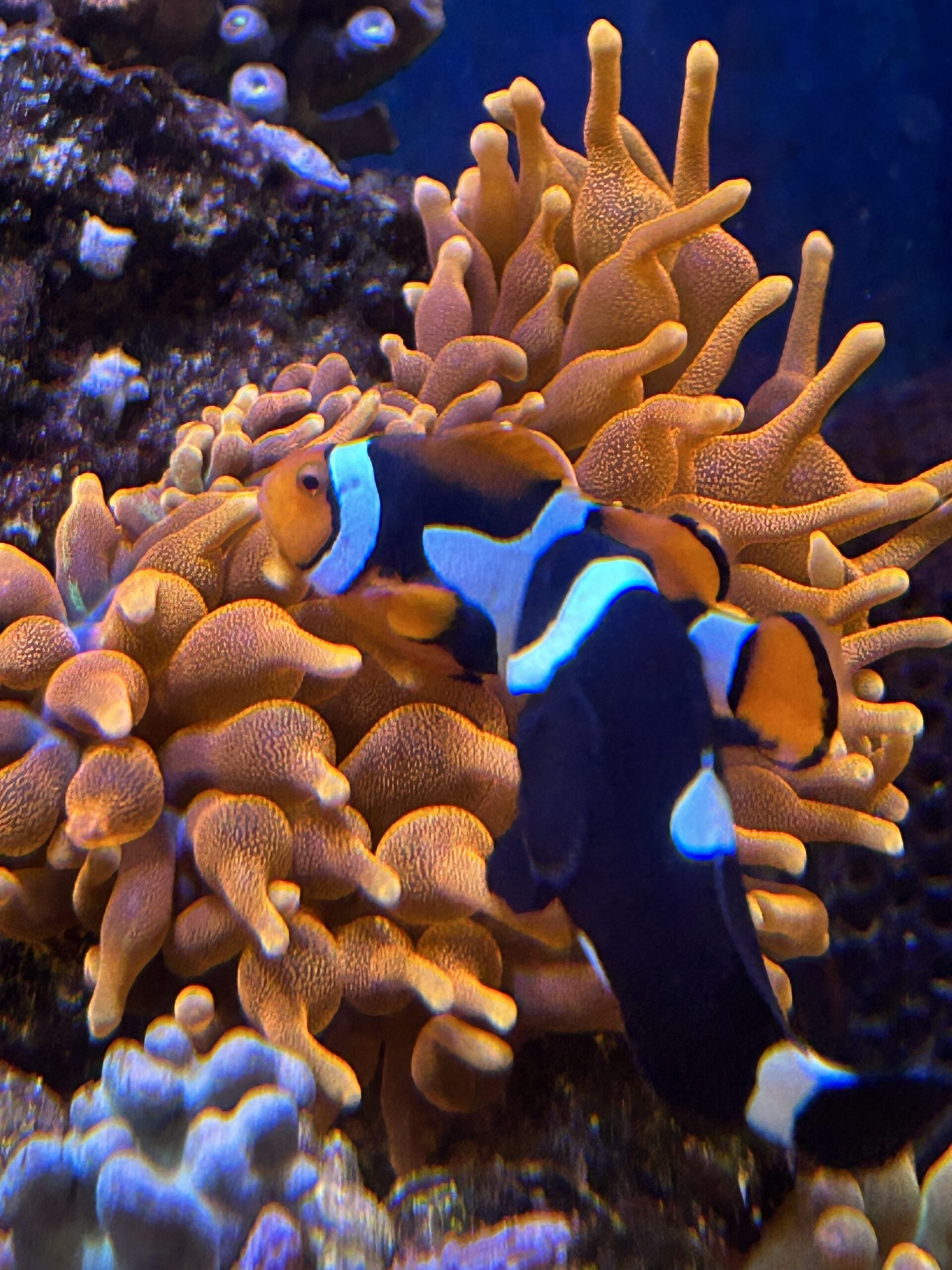
When done right feeding corals can produce positive effects, but this is not without a downside when done improperly. First, if too much is added either at once or in general the nutrient levels and DOM levels can get too high and produce either algae, cyano, or bacterial blooms. Just as problematic, even when done right, feeding can lead to an increase in some pests including aiptasia and majano anemones, bristle worms, vermetid snails, and fan worms. So before feeding is introduced, these pests should be eliminated or be greatly reduced lest they become problematic. If possible natural predators for these pests should be used.
Understanding the nutritional needs of corals and other invertebrates is still in its infancy with much to learn. After seeing how meeting the needs of corals can lead to spawning, better growth and coloration, and improvements in general coral health it is easy to understand why more and more hobbyists are feeding their corals. It will be interesting to see if over time this improved nutrition leads to greater rates or more successful spawning in our corals as well as other positive things that we may be just starting to realize.
